How Radioactive Is Bismuth?
Bismuth is just barely radioactive, with an extremely long half-life of about 2 x 1019 years, which is roughly a billion times longer than the age of the universe. It emits very low-intensity alpha radiation, easily stopped by simple barriers, and poses almost no health risk under normal conditions.
Understanding Bismuth’s Radioactivity
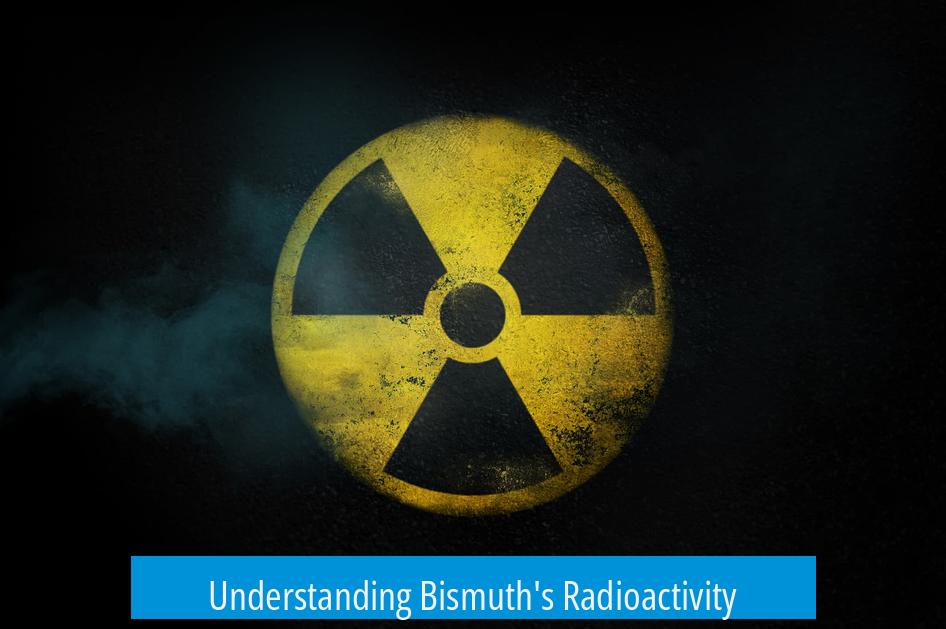
Half-Life and Radioactive Decay
The primary measure of radioactivity is the half-life—the time for half of a given amount of a radioactive substance to decay. Bismuth-209, the most stable isotope of bismuth, has a half-life estimated at about 2 x 1019 years.
To put this into context, the age of the universe is approximately 1.38 x 1010 years, meaning bismuth’s half-life exceeds it by nearly a billion-fold.
This incredibly long half-life means that bismuth decays at an almost imperceptible rate. For example, if one kilogram of bismuth existed since the dawn of the universe, only around 450 nanograms would have decayed by now.
Decay Rate and Radiation Emission
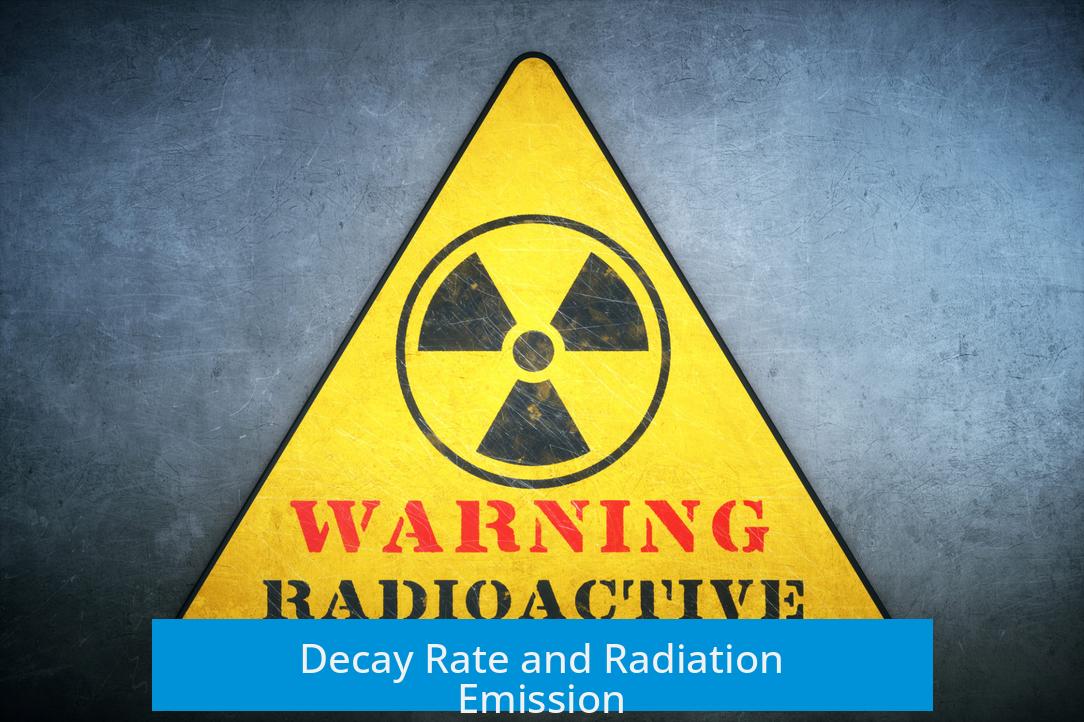
- Decay events: About 100,000 atoms of bismuth decay per year in 1 kilogram.
- Hourly decay: Approximately 11 atoms decay every hour, a very small number.
- Type of radiation: Alpha particles (helium nuclei) emitted during decay.
The low number of radioactive decay events explains why bismuth’s radioactivity is so weak, making it negligible even in relatively large samples.
Comparing Bismuth’s Radioactivity to Common Sources
Everyday Radiation vs. Bismuth
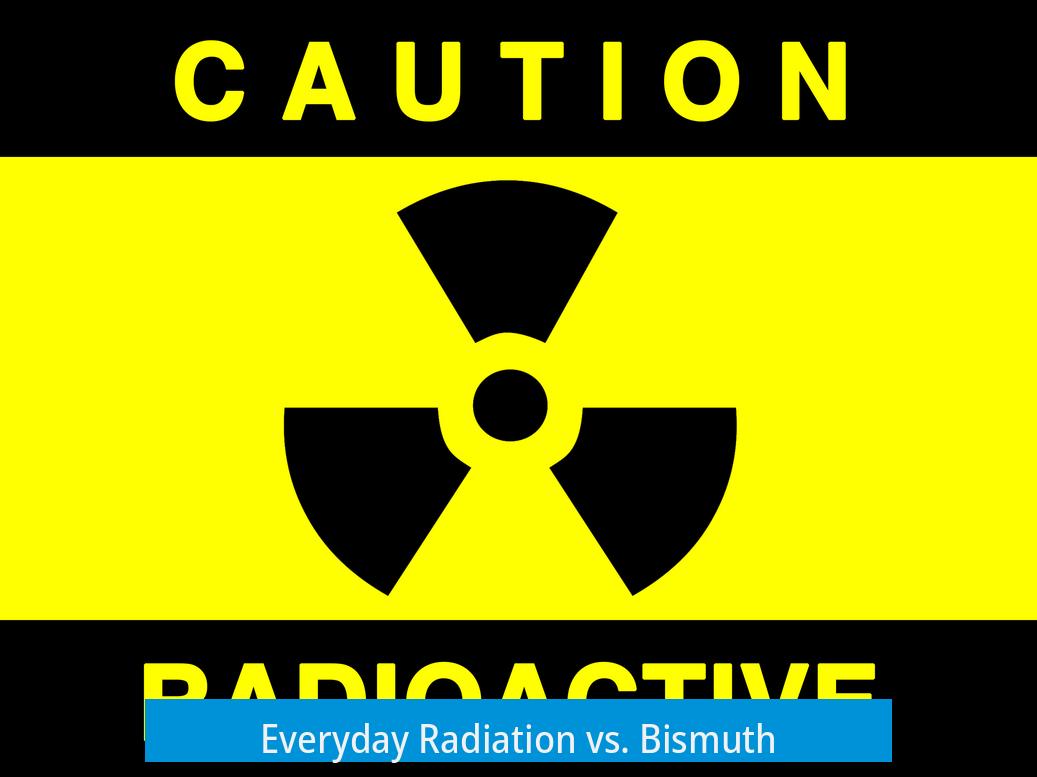
Everyday sources expose people to more radiation than bismuth does. For instance, a banana emits about 15 Becquerels (Bq) of radiation due to potassium-40. Bismuth’s radioactivity is roughly 0.0001% that of potassium.
This implies that eating a banana results in higher radiation exposure than holding or living near bismuth metal.
Cosmic Rays and Household Items
- Cosmic rays from space cause more radiation than bismuth.
- Smoke detectors contain americium, a much stronger alpha emitter compared to bismuth.
- Taking an airline flight exposes a person to radiation levels greater than those from bismuth.
These comparisons underscore how insignificant bismuth’s radioactivity is in daily life.
Nature of Bismuth’s Radiation and Safety Measures
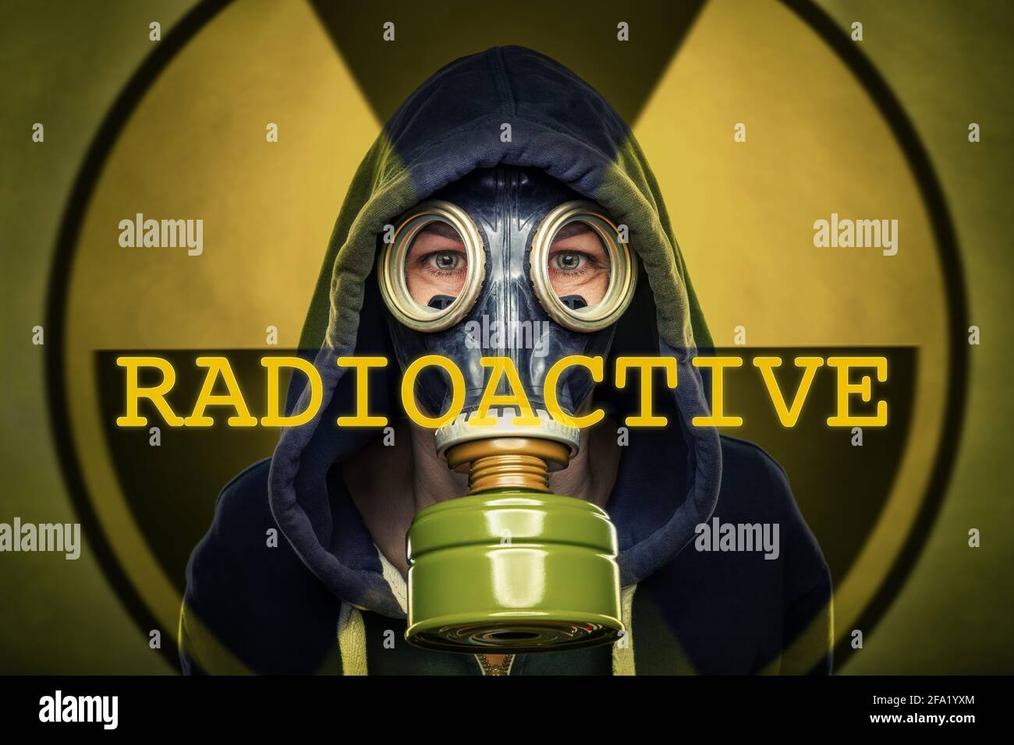
Alpha Particle Emission
Bismuth emits alpha particles during radioactive decay. Alpha particles are helium nuclei with low penetration power.
They can be stopped by paper, clothing, or even the outer dead layer of human skin. In air, they travel only a few centimeters.
Shielding Effectiveness
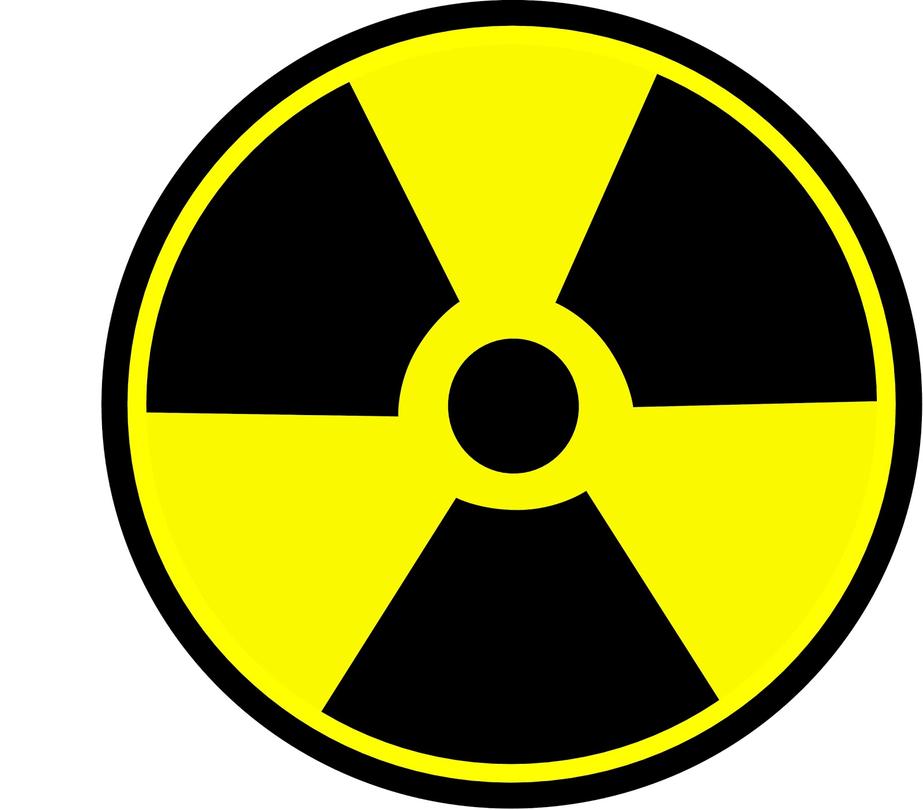
- Alpha particles cannot penetrate sheets of paper.
- Clothing or the dead skin layer on human bodies blocks these particles effectively.
- Most emitted radiation is absorbed within the bismuth rock itself.
As a result, external exposure to bismuth’s radiation is negligible, and trivial direct contact does not present a health hazard.
Potential Ingestion Hazards
The primary concern would be internal exposure by ingesting bismuth fragments, where alpha particles could directly affect tissue. However, bismuth metal is not poisonous and is generally safe under normal use.
Therefore, handling bismuth safely involves standard hygiene practices without special radiation precautions.
Scientific Context and Discovery of Bismuth’s Radioactivity
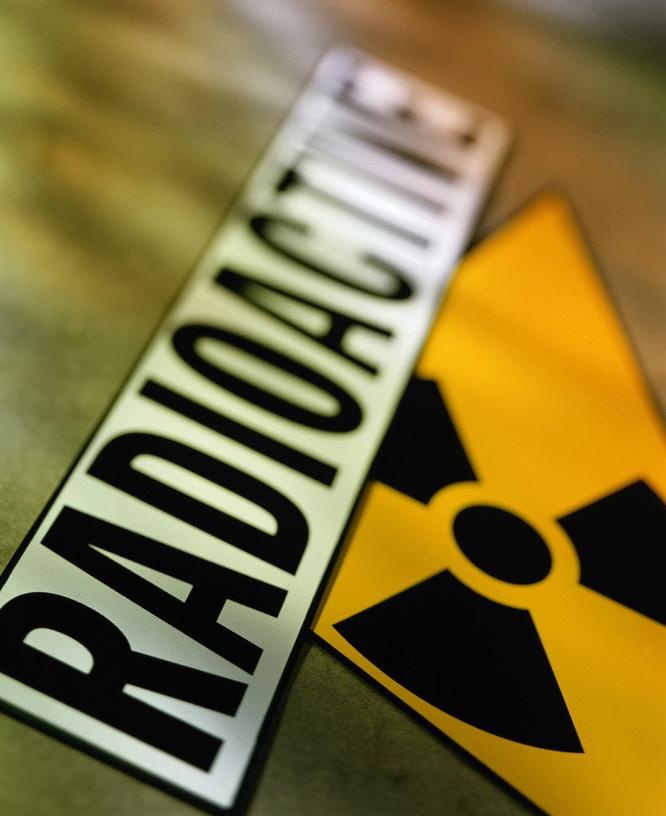
Delayed Recognition of Radioactivity
Bismuth was long thought to be stable. Its weak radioactivity remained undetected until 2003, when sensitive techniques finally verified that it undergoes alpha decay.
This marked bismuth as the only naturally occurring element predicted to display radioactivity before confirmation.
Comparative Half-Life Data
| Element | Isotope | Half-Life (years) | Notes |
|---|---|---|---|
| Bismuth | 209Bi | ~2 x 1019 | Longest-known alpha emitter half-life for a naturally occurring element |
| Tellurium | 128Te | ~1024 | Longest known half-life overall |
| Dysprosium and beyond | Various isotopes | Varied; mostly radioactive | Many elements past Dysprosium are theoretically radioactive in minor amounts |
Practical Implications and Health Considerations
Safety of Bismuth in Consumer Products
Bismuth compounds are commonly used in medications, such as Pepto-Bismol, demonstrating their safety in humans.
Although metallic bismuth should not be ingested, its radioactivity level and chemical toxicity are both very low.
Risk Assessment from Radiation Exposure
Based on calculations, it would take over 17,000 years of continuous exposure to bismuth decay products for any fatal radiation dose to accumulate in a 50 kg person.
People are exposed to more radiation from natural sources, food, and air travel than from typical bismuth.
Guidelines for Handling
- No special radiation safety measures are required when handling bismuth metal.
- Avoid ingestion of bismuth particles.
- Normal environmental exposure is not harmful.
Summary of Key Points
- Bismuth has an extremely long half-life, 2 x 1019 years, making it only weakly radioactive.
- It emits alpha particles, which have very low penetration and are stopped by paper, skin, and clothing.
- Daily radiation from bismuth is much lower than that from bananas, cosmic rays, or airline flights.
- Detection of bismuth’s radioactivity occurred only recently due to its weak decay.
- Bismuth is safe to handle and its use in medicines confirms minimal health risks.
How Radioactive is Bismuth? Unpacking the Truth Behind the Metal’s Mild Glow
Is bismuth radioactive? Yes, but not by much. In fact, its radioactivity is so faint that you’d have to stare at it for billions of years—or longer—to notice it decaying. Bismuth holds the crown as one of the least radioactive elements found naturally on Earth.
Let’s dive deep and understand exactly how* radioactive bismuth is and what that means for you if you keep a shiny bismuth crystal on your desk.
The Incredible Half-Life of Bismuth: Waiting for the Universe to Blink
Bismuth’s half-life clocks in at about 2 × 1019 years. To put it simply, that’s roughly a billion times the age of the universe—far longer than the 13.8 billion years since the Big Bang.
Imagine this: if you had one kilogram of pure bismuth created right at the dawn of the universe, only about 450 nanograms (that’s less than a grain of sand) would have decayed by now. The decay rate works out to about 100,000 atoms per year, or roughly 11 atoms every hour. That’s pretty tame.
This slow decay means bismuth emits radiation incredibly sparsely. In practical terms, you’re safer hanging around a bismuth crystal than you are on a commercial airplane cruising at 35,000 feet.
Radioactivity? Compare It to a Banana (Yes, Really!)
Often, people worry about “radiation” and envision glowing, dangerous metals. But here’s the twist: you get more radiation eating a banana than from holding a chunk of bismuth. Bananas contain potassium-40, a naturally radioactive isotope, emitting about 15 becquerels (Bq) of radiation.
Bismuth’s radioactivity sits at about 0.0001% that of potassium—meaning its presence is negligible compared to naturally occurring elements in your body.
- Even your smoke detector packs more radioactive punch. It uses americium, a much stronger alpha emitter, to detect smoke.
- Cosmic rays bathing Earth from outer space expose you to millions of times more radiation than bismuth’s casual atomic decay.
- The bottom line? If you’re worried about indirect exposure from common household items, bismuth shouldn’t be on your radar.
Alpha Particles: The Radiation That Can’t Even Reach You
Bismuth emits alpha particles when it decays—helium nuclei that get stopped fast.
How fast? Well, a simple sheet of paper or a layer of clothing blocks alpha particles completely. Even your dead outer skin cells act as a natural shield.
This means there’s virtually no risk of bismuth’s alpha radiation penetrating your body unless you start licking or eating the metal itself—which is a hard pass. So no, placing bismuth sculptures or crystals around your home doesn’t expose you to any real radiation hazard.
The Scientific Mystery Solved Only Recently
Here’s a funny fact: for over a century, scientists thought bismuth was absolutely stable. It’s so faintly radioactive that its decay eluded detection until 2003. Surprise, surprise!
Bismuth actually earns the unique distinction of being the only naturally occurring element predicted to be radioactive before anyone observed it experimentally.
Its half-life isn’t the longest. For example, tellurium-128’s half-life is estimated at 1024 years. But bismuth’s longevity puts it amongst nature’s slowest decayers.
Health and Practical Implications: Should You Worry?
If you’ve used Pepto-Bismol, you’ve ingested bismuth compounds without even blinking. It’s perfectly safe because of the same mild radioactivity factor. People who work with radiation sources have run the numbers, concluding it would take over 17,000 years of exposure for bismuth’s decay products to reach a lethal dose for a 50 kg human.
In contrast, a stroll outside or an airplane ride packs a far higher dose of radiation.
So what about having bismuth around the house? Totally fine. Just remember not to chew on it or lick it. Otherwise, you’re dealing with a virtually inert metal posing zero health risk.
Wrapping Up: The Bottom Line on Bismuth’s Radioactivity
Bismuth is radioactive, technically speaking. But its rate of decay is so slow and emits a type of radiation (alpha particles) that struggle to get past a piece of paper.
This means:
- The radioactivity is insignificant compared to everyday sources, like bananas or cosmic background radiation.
- Bismuth’s radioactivity does not pose a health threat in any normal use or exposure scenario.
- It’s an amazing example of how nature doesn’t always fit our scary assumptions about “radioactive” materials.
Next time you see bismuth’s dazzling, iridescent crystals, just remember: they’re radiating quietly. But that “radioactivity” is more whisper than roar.
So go ahead, keep that bismuth nearby—it’s more fascinating than frightening.
How radioactive is bismuth compared to common objects?
Bismuth is about 0.0001% as radioactive as potassium in bananas. You get more radiation from eating a banana or flying in an airplane than from living near bismuth.
What type of radiation does bismuth emit?
Bismuth emits alpha particles, which are helium nuclei. These particles travel only a few centimeters in air and are stopped by paper, clothing, or dead skin.
Is bismuth dangerous to touch or have in the home?
External exposure to bismuth’s radiation is safe because alpha particles cannot penetrate skin. The main risk would be ingesting it, but otherwise it poses no health threat in a typical setting.
How slow is bismuth’s radioactive decay?
Bismuth’s half-life is about 2 x 10¹⁹ years, nearly a billion times the universe’s age. This means it decays extremely slowly, with only about 100,000 atoms decaying per kilogram each year.
Why was bismuth’s radioactivity only discovered recently?
Its radioactivity is so weak that bismuth was long thought to be stable. It was only detected in 2003 after sensitive measurements showed its tiny alpha decay.


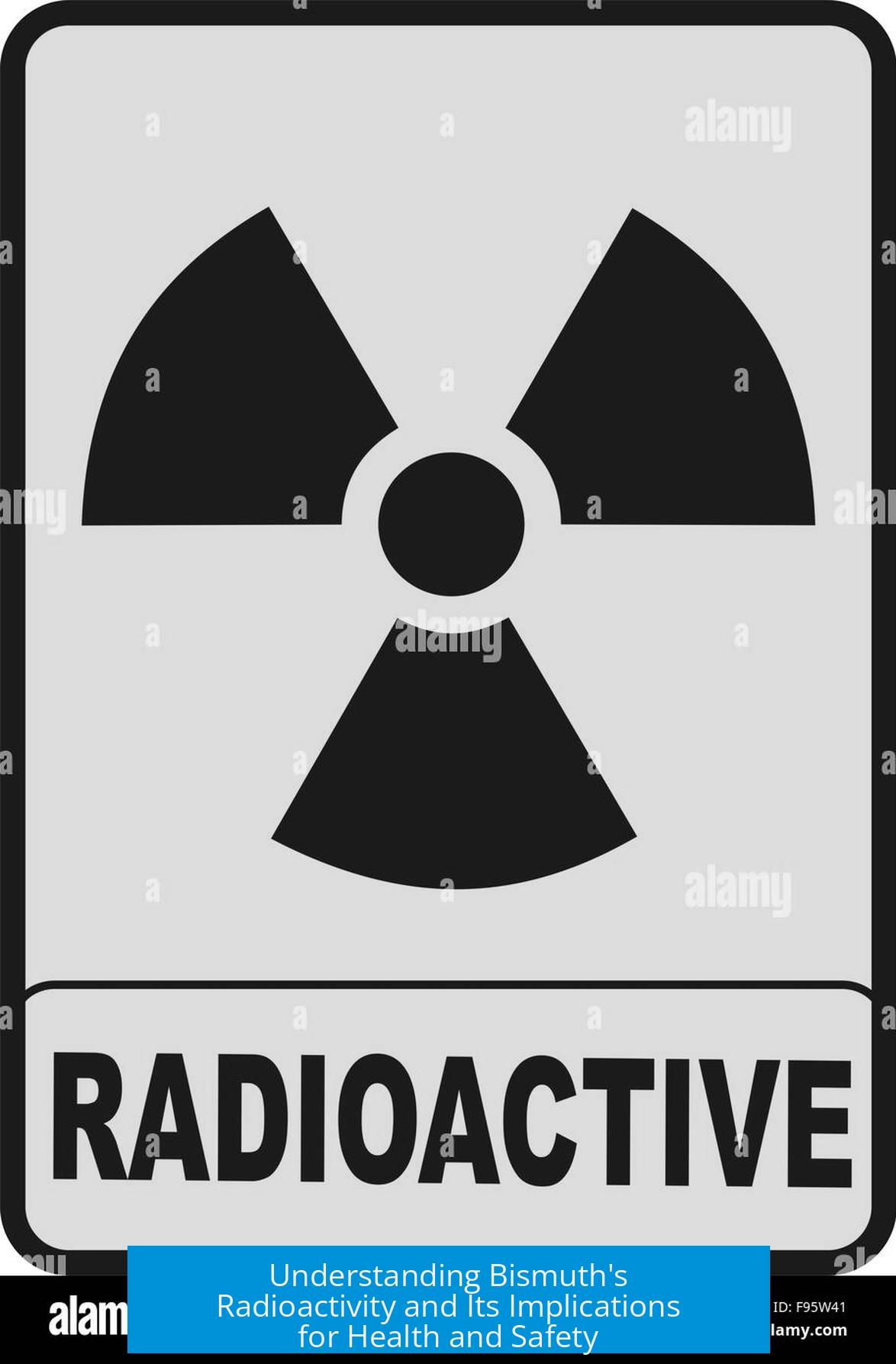


Leave a Comment